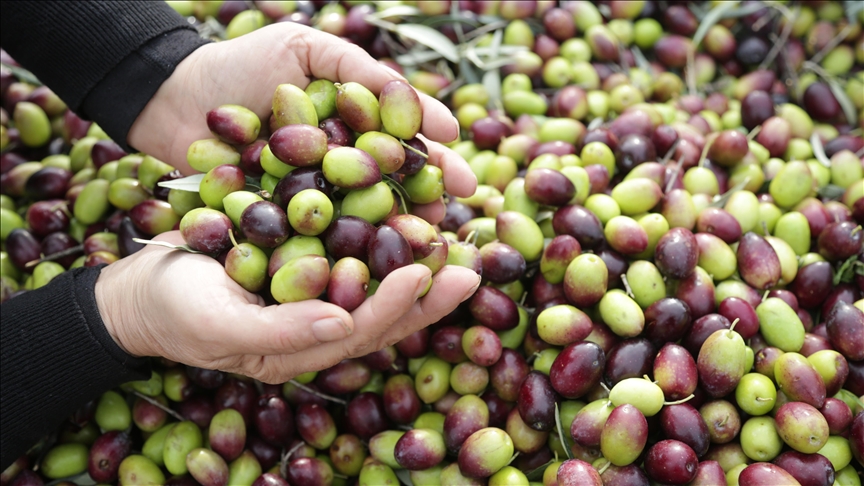Milas olive oil is a natural extra virgin olive oil obtained by processing Memecik variety olives, grown under Milas climate and soil conditions, in batch or two- or three-phase pressing facilities.
Product Profile and Type of Geographical Indication
Milas olive oil is included in the vegetable and animal oils product group, specifically in the olive oil category. The history of Milas olive oil dates back to the Carian Civilization period, and the region has been an important olive oil production and trade center since ancient times.

Milas olives (AA)
Product Description and Distinguishing Features
Milas olive oil is extra virgin and is primarily produced from Memecik variety olives grown in the Milas region. This olive variety, which ripens with rainwater in nature, has a small fruit size and yields a high-quality, high-yielding, yellow-green colored, medium-fruity natural olive oil.
- Taste and Aroma Profile: It is not pungent. It gives a very slight burning sensation in the throat and a very slight bitterness in the mouth. Noteworthy features of its fruitiness are the dominant citrus, orange, tangerine, and lemon aroma scents. The aroma profile also includes hexanal, described as "green apple and cut grass"; E-2-hexenal, described as "bitter, almond, green and apple"; hexanol, described as "fruity and cut grass"; and Z-3 hexenol components, described as "green fruity and bitter".
- Acidity Level: Thanks to the calcareous, clay-sandy, and alluvial soil structure of the Milas region, the acidity level of the Memecik olive variety is low.
- Quality Criteria: It complies with the Turkish Food Codex Extra Virgin Olive Oil Communiqué in terms of quality and purity criteria. Basic component analysis has shown that Milas olive oil samples differ from other regional samples.
Production Method
The production method of Milas olive oil does not fundamentally differ from the production of other extra virgin olive oils and can be produced in batch or two-phase or three-phase pressing facilities. The production process follows the general steps below:
- Storage of Olives: Short-term storage of harvested olives under suitable conditions.
- Cleaning-Washing of Olives: Removing foreign matter such as leaves and branches from the olives and washing them.
- Crushing-Grinding of Olives: Crushing and grinding the olives by appropriate methods to extract their oil.
- Kneading of Olive Paste (Malaxation): Kneading the crushed olive paste at a certain temperature and for a certain duration to ensure the oil droplets combine.
- Extraction of Oil from Olive Paste: Separating the oil from the kneaded paste (by pressing or centrifugal methods).
- Separation of Pomace Water from Olive Oil: Separating the vegetable water (pomace water) remaining in the oil.
- Filtration of Olive Oil: If desired, filtering the olive oil to remove sediment and pulp.
- Storage of Olive Oil: Storing the obtained olive oil in suitable containers away from light, heat, and oxygen to preserve its quality.

Milas Olive Harvest Festival (Milas Kaymakamlığı)
Geographical Origin and Boundaries
Although the geographical boundary is not explicitly stated in the registration document, the product name is "Milas Olive Oil" and it is emphasized that the Memecik variety olives used in its production are grown under Milas climate and soil conditions. This indicates that the geographical boundary covers the Milas district and its surroundings within Muğla province.
Registration Process and Details
National Registration: Milas olive oil was registered with registration number 201 as a result of an application made to the Türk Patent ve Marka Kurumu (Turkish Patent and Trademark Office) with application number C2014/043. The protection date is June 24, 2014. The product was announced in the Resmi Gazete dated May 27, 2016, and numbered 29724.
European Union Registration: Upon the application of the Milas Chamber of Commerce and Industry, Milas Olive Oil was registered as a geographical indication (name of origin) in the European Union by being published in the EU Official Journal dated December 23, 2020, and numbered L 434. This registration ensures the product's protection in EU countries as well.


